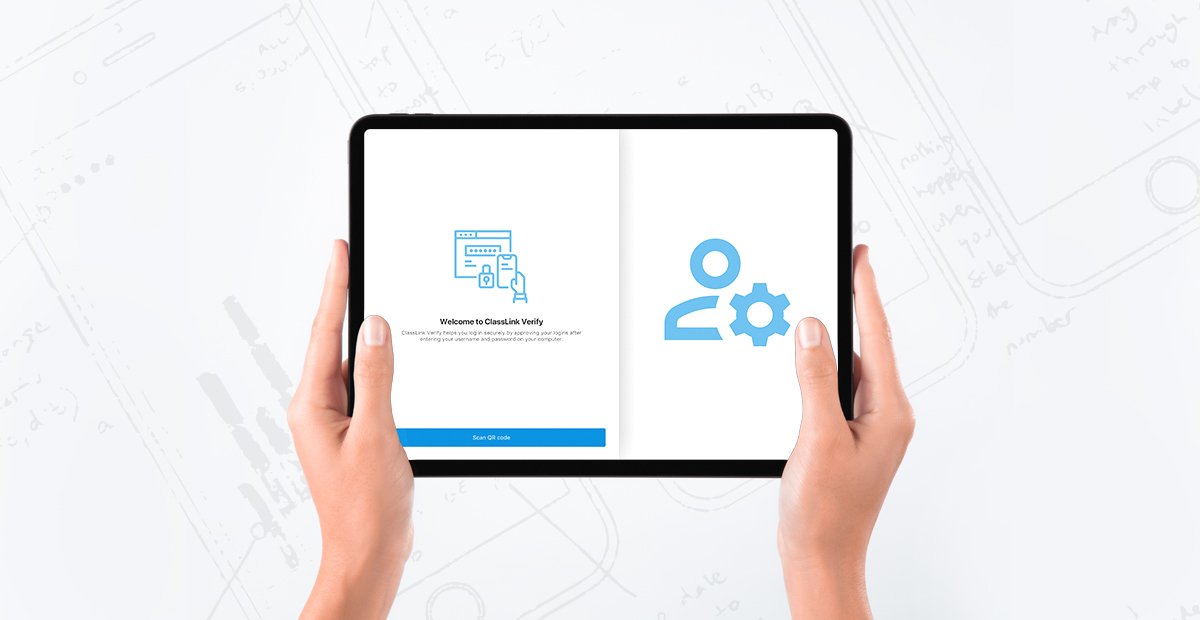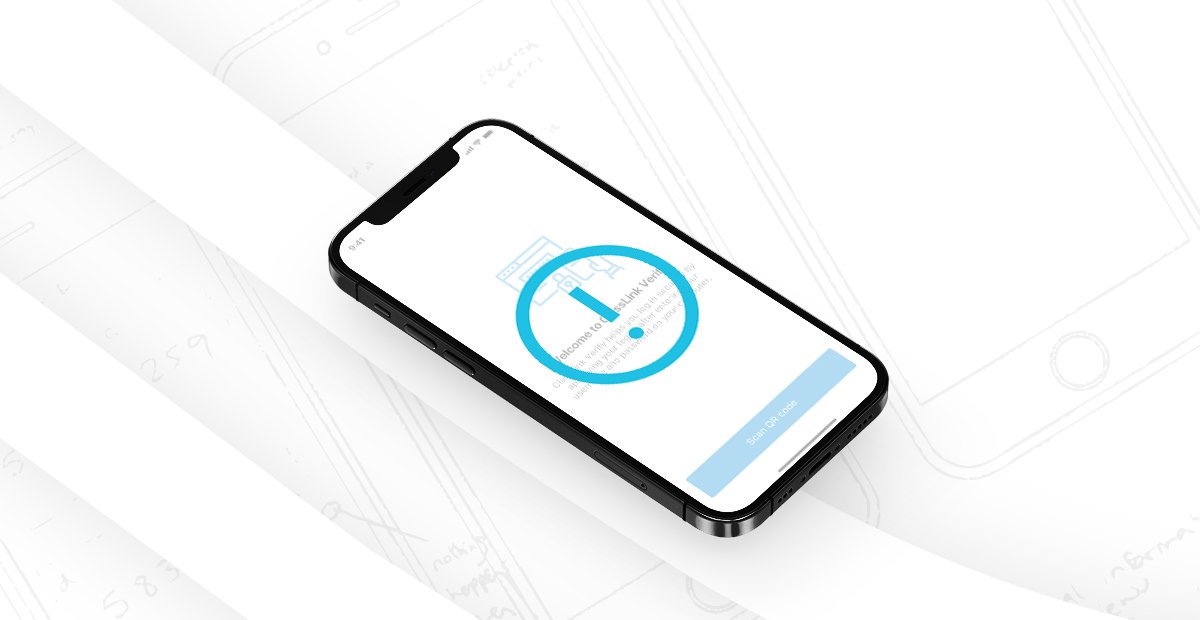Here’s Why You Should Build a Two-Factor Authentication Tool for Your Mobile Product
As we continue to delegate more and more of our daily tasks to our devices, our digital identity is becoming increasingly vulnerable. The more present we are online, the more chances for hackers to steal our sensitive personal information and use it to access our social media profiles, hack our devices, and even break into our bank accounts. For companies, cybersecurity poses an even bigger challenge, as the stakes are much higher and the amount of sensitive and confidential information is at an entirely different level.
So, in the face of digital cybersecurity threats, how can we protect ourselves? Setting up strong, fortress-style passwords is one way to do it; however, that’s not enough. To add an extra layer of security, many services provide a two-factor authentication method (2FA), or even multi-factor authentication (MFA) for user verification.
What is a two-factor authentication tool and why do you need one?
A multi-factor authentication tool is a commonly-used ‘second security tier’ that requires users to verify their identity through two (or more) different authentication methods. These methods usually include a password, verification via phone number or email, or verification through face or fingerprint recognition. Such a tool basically adds an extra step that helps better secure an account and protect it from cyberattacks and hackers.
“2FA is a security process or system in which the providers and users of a service make use of two distinct authentication methods in order to strengthen the access security to said service. It can also be called 2 step verification, dual factor authentication and is a subtype of multi-factor authentication (MFA). Online, 2FA usually refers to a second layer of security on top of a password.” - Madalina Sinca, X2 Mobile iOS Developer
The fact of the matter is that advanced hackers sometimes can bypass even multi-factor authentication, but the extra security layers definitely makes life harder for them. Nowadays, as cyberattacks are on the rise, it’s safe to say that all products should include either a two-factor or a multi-factor authentication method.
“2FA is especially useful for products that are security-sensitive, since it protects users' accounts from hacked passwords or phishing, and reduces fraud risk. Single passwords aren’t as secure as they used to be. Hackers can find tons of ways to crack your passwords, using tactics like password spraying, keylogging, and brute force attacks. Users should always create strong, complex passwords or passphrases, but it still may not be enough to keep their accounts secure forever.” - Madalina Sinca, iOS Developer
How does two-factor authentication work?
Multi-factor authentication sounds a lot more complicated than it has to be. It basically can be categorized into three distinct types:
Knowledge factors (something that the user knows, such as a password, username, email address, and other personal details);
Possession factors (something that the user owns, such as a smartphone, a credit card, an ID, and so on);
Inherence factors (something that’s unique to each user, like a fingerprint, facial ID, retinal scan, voice recognition).
More often than not, a two-factor authentication solution will feature a knowledge factor, usually a password, and an inherence factor or possession factor. We should note here that a security question, like ‘What’s the name of the street you grew up on?’ or ‘What was the name of your first pet?’ does not count as two-factor authentication, because such a question is also a knowledge factor, just like a password; it’s not a distinct layer.
The password remains the main authentication method for online users and providers, however, it’s definitely not enough to ensure digital security, especially since most users fail to routinely change their passwords. This is one of the reasons why we strongly believe that any new mobile product that needs to protect users’ accounts needs to incorporate two-factor authentication. All the big digital players are doing it: Apple, Facebook, Google, Instagram, Amazon, Dropbox, LinkedIn, Microsoft, Paypal, Yahoo, Twitter are just some of the providers that allow users to enable two-factor authentication to better secure their accounts.
What are the major benefits of two-factor authentication?
Obviously, the biggest benefit of a two-factor authentication solution lies in the enhanced security of a user’s account, but such a solution can also prevent fraud and deter hackers from going after your sensitive data. Bypassing a two-factor or multi-factor authentication tool requires additional time, effort, and resources, and not all cyberattackers out there will be willing to do it, instead going for easier targets.
The X2 Mobile team has worked on a multi-factor authentication app for one of our clients in the education sector, ClassLink. The ClassLink Verify tool allows users to generate verification codes, in addition to their passwords, whenever they sign into their accounts. The solution is available for iOS devices, and works with any application requiring two-step verification to sign into an account. All that users need to do is enable two-factor authentication from their ClassLink accounts. What makes this tool stand out is the fact that it doesn’t require an internet connection to work, which adds a bonus layer of security.
“The main advantage of two-factor authentication is the increased login security, but the pros of two-factor authentication generally differ from type to type (SMS code, push notifications, biometric data, physical hardware tokens, etc). For our solution, ClassLink Verify, the main advantage is the possibility of using it in the absence of cellular coverage or access to the Internet.” - Madalina Sinca, iOS Developer
Since users will be running the ClassLink Verify solution offline, the user is the only one performing the action, with no communication between the Verify app and the service they’re logging into. Consequently, their connection won’t be exposed and intercepted by potential hackers.
Why would someone need a custom two-factor authentication application?
We know that multi-factor authentication can help users and service providers better protect their sensitive information, adding a much-needed layer of extra security. But why would someone need a custom two-factor authentication app? Why not just use one of the existing apps and tools available in the app stores?
The answer is quite straightforward. Custom implementation of a two-factor or multi-factor authentication tool benefits the service provider, since it simplifies and even eliminates the maintenance and dependency issues that can arise with using a third-party solution. A custom two-factor implementation allows entrepreneurs to build and integrate the exact features that their product requires, without any unnecessary embellishments, features, heavy APIs or long-term reliability risks that often come with third-party tools.
The challenges of implementing a custom two-factor authentication tool - ClassLink Verify by X2
As we’ve already mentioned, our team developed a two-factor authentication app for our clients in the education industry, named ClassLink Verify. So, we know firsthand what it takes to build a customized multi-authentication tool, what the process entails, and what challenges might arise along the way. We thought we’d share the lessons we learned while working on this solution.
How did the implementation of the Verify 2FA solution impact end users?
Some digital users think that using a multi-factor authentication tool is a waste of time, and a hassle that they don’t want to go through. Unfortunately, simply relying on a password makes users extremely vulnerable in the face of potential cyberattacks, so every additional step makes it harder for hackers to steal important data - even if it might take a little longer to log into an account.
In the case of ClassLink Verify, the solution we developed provides users with a custom, easy-to-use, reliable authenticator option to use as an extra security level for accounts that support OTP-code multi-factor authentication.
What were the main features implemented as part of the 2FA ClassLink Verify solution?
For now, the available features within the ClassLink Verify tool built by X2 Mobile include the usage of timer- and counter-based one-time password codes, stored inside the Verify app.
“Personally, I would consider the simplicity of the design and freedom of customization, storage, and editing of OTP accounts a feature as well, matching those of Google Authenticator, for example.” - Madalina Sinca, iOS Developer
The list of features integrated into the Verify app is soon to be expanded, with the implementation of a custom push notification service for our clients at ClassLink.
What was the most challenging part of the implementation? How did we solve it?
Any new mobile product or solution comes with challenges, that’s just the way it is, and the Verify app was no exception. Luckily, our team enjoys a challenge!
“The most challenging part of the process was developing a solution of two-factor authentication OTP management without there being a default ‘textbook approach’ to generating the codes. Different platforms and providers will use different types of secret keys (used as seeds for the OTP-generating algorithms), various algorithms, and will choose to send different parameters when setting up the two-factor authentication - usually inside a QR code that isn’t constrained to a certain structure.
We solved it with patience, by slowly adding support for the different main types of QR structure, algorithms and secret key formats we learned existed by exploring the market.” - Madalina Sinca, iOS Developer
Conclusion: Key elements to consider when implementing a 2FA application
To wrap things up, we’re going to keep it simple. If you’re looking to incorporate multi-factor authentication into your digital product, you should know that there are many types available, and you must make sure that the solution you pick fits the requirements and specifics of your product.
Entrepreneurs and founders need to be mindful of some of the cons of implementing a multi-factor authentication solution, as well, and know how to diligently minimize them. Here are the most common downsides, or challenges, when it comes to implementation:
Increased login time (the added security step adds time to the authentication process, and it can become frustrating to the user if this is not well-accounted for);
Dependency issues (in the case of third-party 2FA providers);
Maintenance issues (you will need to find an efficient way of keeping track of users and their various two-factor authentication methods).
The good news is that you don’t need to figure all of this out on your own. If you’re thinking of adding an extra level of security to your product or service, don’t hesitate to reach out to the X2 Mobile team. We can work together to find the right authentication method for the needs and requirements of your products, to help you better protect your users and their personal information.





